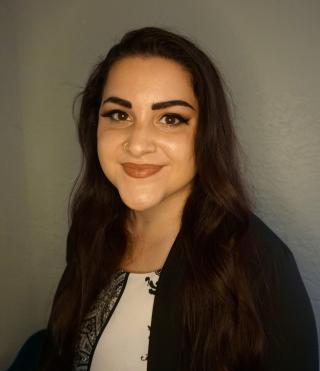Katherine Titus is an alum of the CHRM program, having received her master's degree in 2024. Her thesis is titled Insights on the Application of Photogrammetry and Digital Data Collection on a Bioarchaeological Sample from Çadir Höyük in Central Turkey. Abstract: This project seeks to answer the question as to how photogrammetry and digital data collection can be used to address the major issues of accessibility, preservation, and ethics on a collection of human remains from the archaeological site of Çadır Höyük located in the Anatolian Plateau. These issues are ubiquitous in the field of bioarchaeology and there is a pressing need to develop new methodologies and research practices to assuage them, especially for researchers working in foreign countries, or researchers who do not have immediate access to collections. The purpose of this research endeavor was to obtain both metric, and photographic data that could be further studied in posterity outside of the host country. Many limitations exist inhibiting researchers in this field as archaeological material, specifically within the country of Turkey, is strictly regulated. This thesis examines the application of photogrammetry in conjunction with the data obtained from a physical bioarchaeological investigation on a collection of ten individuals from Çadır Höyük and seeks to determine the reliability of digital modeling and digital data collection without having the collection present. This was done with the aspiration of addressing the concerns specific to the study of human remains from contexts outside of the United States while also respecting and abiding by local heritage regulations. Only two three-dimensional renderings were successfully created from the ten individuals using the photogrammetry software AgiSoft, due to issues of preservation and fragmentation. A comparison of craniometric measurements collected from the physical collection and measurements collected from the digital models demonstrated an impressive degree of accuracy between the two datasets, indicating the reliability of the digital models for post-field research. In addition, this demonstrated the efficiency and practicality of obtaining this data from the digital models. The digital modeling and digital data collection on this sample exemplifies the viability and practicality of incorporating this methodology and offers immediate solutions for issues pertaining to preservation, accessibility and ethical treatment of these remains.
Following below is an archived profile.
Katherine Titus has conducted extensive archaeological research throughout the United States as well as abroad. She has archaeological research and excavation experience in the Southeastern, Northeastern, and Southwestern United States as well as the Near East and Central America. Her undergraduate studies focused on Middle Eastern archaeology and biological archaeology. She is experienced in prehistoric and historic archaeological survey, site testing, artifact collection, and data recovery. She has conducted Phase I, II, and III survey as well as archaeological monitoring and pedestrian survey. Her survey experience spans across several states including New Hampshire, Florida, Georgia, Louisiana, North Carolina, Virginia, and Arizona. She has assisted with and preformed laboratory analysis and documentation of lithics, ceramics, and human remains from a myriad of cultures and regions.



